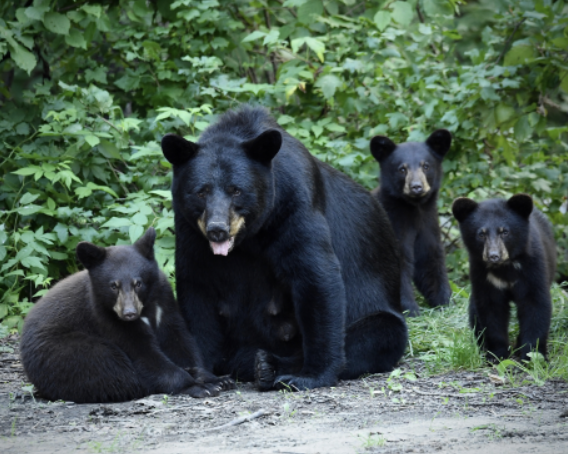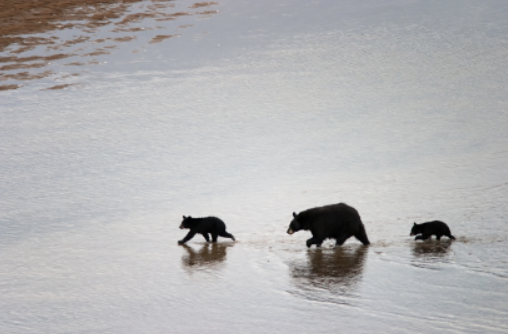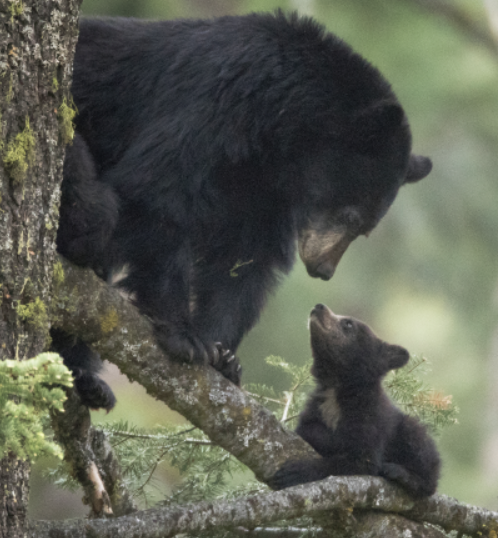Where Have all the Bears Gone?

For our local farming community, 2025’s spring and summer were busy seasons due to many black bear encounters! Mamas appeared with either twin or triplet cubs.
Multiple births were commonplace while single births were not. Why were there so many multiple births?
The answer to this question had to do with food. With increased access to food, mama bears often had multiples.
Our farm, located at the base of a mountain, provided access for bears on their way to the local blueberry farms and the river. We’d often see mama bears with their cubs as they trekked by.

In late June, one mama bear lumbered with her twin cubs through our pasture.
Her hungry babies were demanding, and she needed plenty of food. However, only a few natural berry varieties were available due to an ongoing drought which delayed and nearly destroyed the usually plentiful berry crops.
By chance, Momma Bear discovered a wild cherry tree loaded with cherries.
Roaring, she sent her cubs into the tree. Two little fur balls scampered up twenty feet with no problem.
Climbing higher resulted in greater access to more cherries, but the narrowing tree trunk meant plenty of tree sway.
After receiving Mama’s instructions, the cubs batted the fruit, and many cherries fell to the ground. Mama devoured them while her twins clung to the rocking tree trunk.
It was fun watching the little ones. Though their labour was intense, but the food wasn’t for them. The cherries were for Mama, who breastfed her cubs. I reckon those cubs were about five months old. Soon, Mama would teach them to forage for their first solid foods, like new grasses. Smashed rotting logs were next and provided an excellent source of ants and grubs.
A steady path of mamas and their cubs ambled through our farming community from April to the end of September. During this time, there were many farm animal and bear encounters. Although the bears weren’t really interested in our llama, they were problematic for our farming neighbours who raised smaller creatures like chickens and sheep.
We often heard our neighbours discharge their bear-bangers to scare the bears from catching and eating their livestock.
It was a crazy, busy time that resulted in frayed nerves, sunburn, and exhaustion!

Then, poof!
By October, the bears seemed to disappear. We were puzzled.
Where had all the bears gone?
I encountered a mama black bear and her three older cubs during a creek-side hike. They were probably from the same family I had seen earlier in the year.
While Mama snoozed by the creek, her cubs frolicked in the puddled water.
Though the scene was playful, I’m sure Mama taught her cubs important lessons because soon, swimming food would return to the creek.
In October, the rains fell, water poured off the land, and water levels in the creeks rose. Bear sightings became more frequent while they waited for the salmon to return.
The drought ended, local creeks filled with water, and the early returning salmon appeared, spawned, and died. The bears feasted. Post-feast salmon remains were evident in both the creeks and their bordering forests. Dead fish odor filled the air.
Farmers and bears were grateful for the returning salmon. With natural food for the bears, fewer bear encounters occurred. It was a win-win.
Though Pacific coastal black bears seldom hibernate, seeing them roam during the winter is rare.
It’s wonderful how nature provides farmers with a six-month break!
